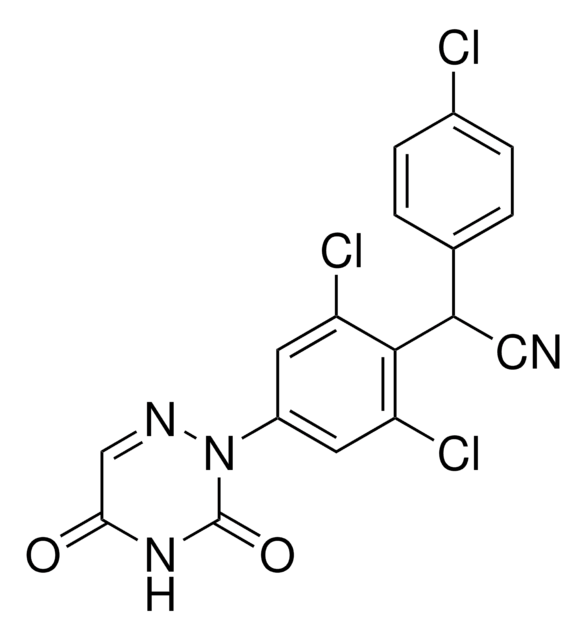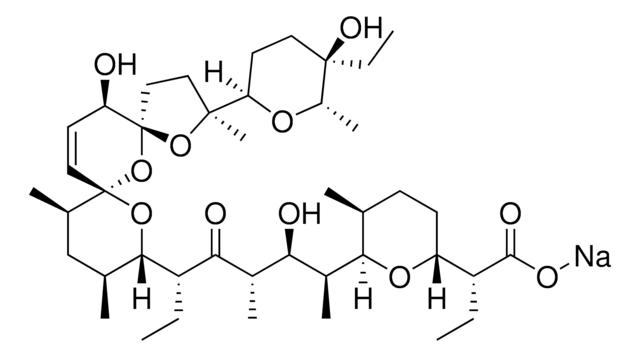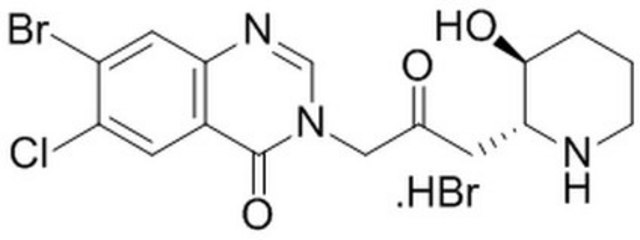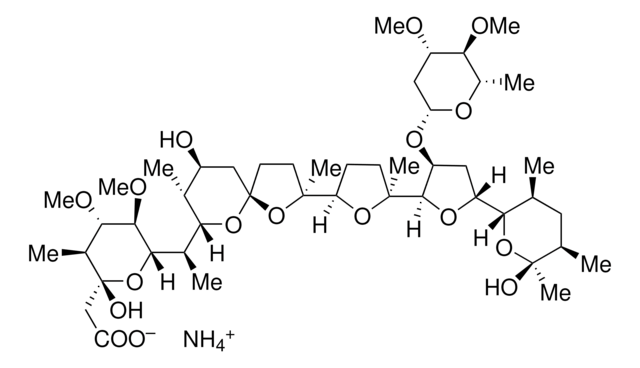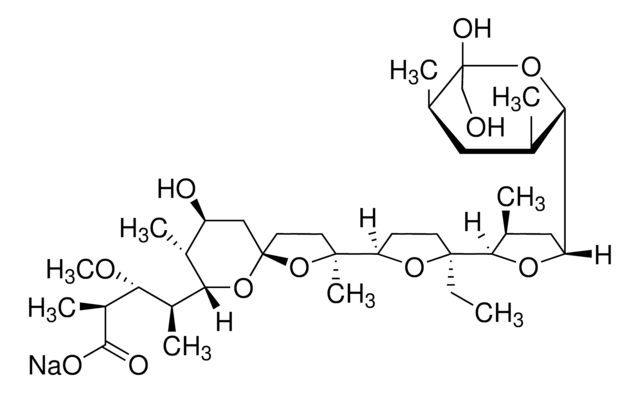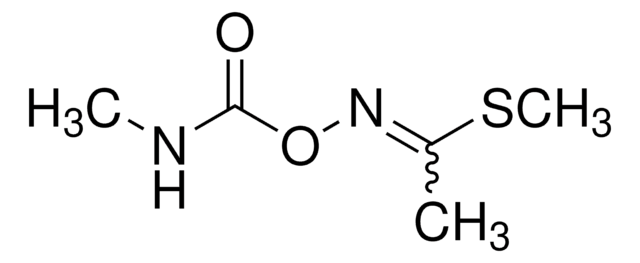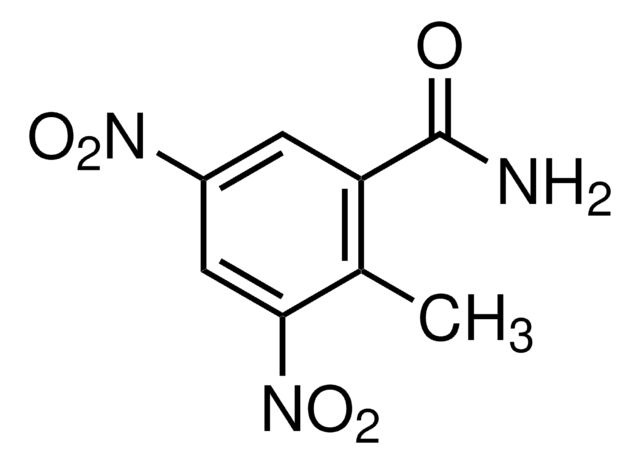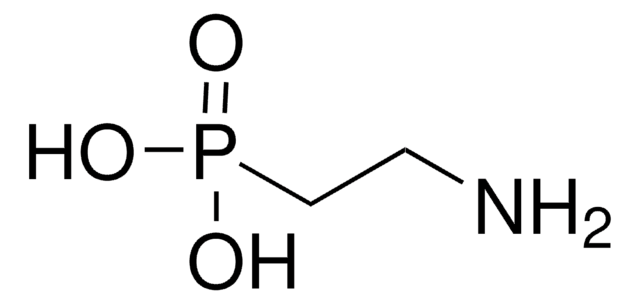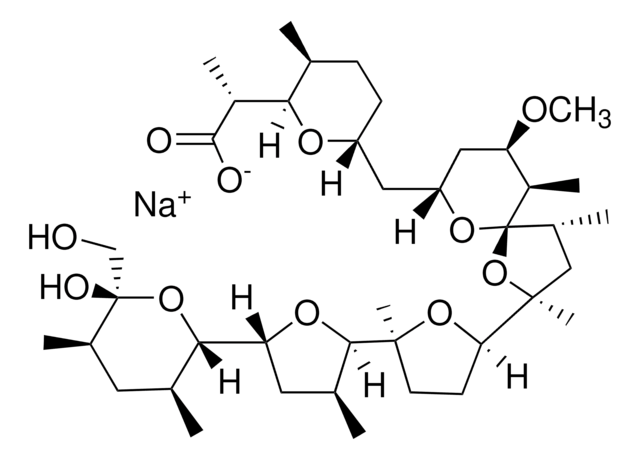32481
Halofuginone hydrobromide
VETRANAL®, analytical standard
Synonym(s):
trans-(±)-7-Bromo-6-chloro-3-[3-(3-hydroxy-2-piperidinyl)-2-oxopropyl]-4(3H)-quinazolinone monohydrobromide
About This Item
Recommended Products
grade
analytical standard
Quality Level
product line
VETRANAL®
shelf life
limited shelf life, expiry date on the label
technique(s)
HPLC: suitable
gas chromatography (GC): suitable
application(s)
forensics and toxicology
pharmaceutical (small molecule)
format
neat
SMILES string
Br.O[C@@H]1CCCN[C@H]1CC(=O)CN2C=Nc3cc(Br)c(Cl)cc3C2=O
InChI
1S/C16H17BrClN3O3.BrH/c17-11-6-13-10(5-12(11)18)16(24)21(8-20-13)7-9(22)4-14-15(23)2-1-3-19-14;/h5-6,8,14-15,19,23H,1-4,7H2;1H/t14-,15+;/m0./s1
InChI key
SJUWEPZBTXEUMU-LDXVYITESA-N
Related Categories
General description
Application
- Multi-residue analysis of 11 coccidiostats in 60 feed samples by reversed phase-high performance liquid chromatography (RP-HPLC) combined with tandem mass spectrometry (MS/MS)
- Simultaneous determination of 15 allowed and banned coccidiostats in animal feed samples by liquid chromatography-tandem mass spectrometry method (LC-MS/MS)
- UHPLC-MS/MS method-based detection and measurement of 26 anticoccidials in surface and groundwater samples following their solid phase extraction (SPE)
- Analysis of 48 anti-microbial compounds in pig feed samples using LC combined with high-resolution mass spectrometry (HRMS)(4)Development of an LC-MS/MS method to determine 20 coccidiostats in different animal muscle samples
Other Notes
Legal Information
Signal Word
Danger
Hazard Statements
Precautionary Statements
Hazard Classifications
Acute Tox. 1 Dermal - Acute Tox. 2 Inhalation - Acute Tox. 2 Oral - Aquatic Acute 1 - Aquatic Chronic 1 - Eye Irrit. 2 - Skin Irrit. 2
Storage Class Code
6.1A - Combustible acute toxic Cat. 1 and 2 / very toxic hazardous materials
WGK
WGK 3
Flash Point(F)
Not applicable
Flash Point(C)
Not applicable
Choose from one of the most recent versions:
Already Own This Product?
Find documentation for the products that you have recently purchased in the Document Library.
Our team of scientists has experience in all areas of research including Life Science, Material Science, Chemical Synthesis, Chromatography, Analytical and many others.
Contact Technical Service